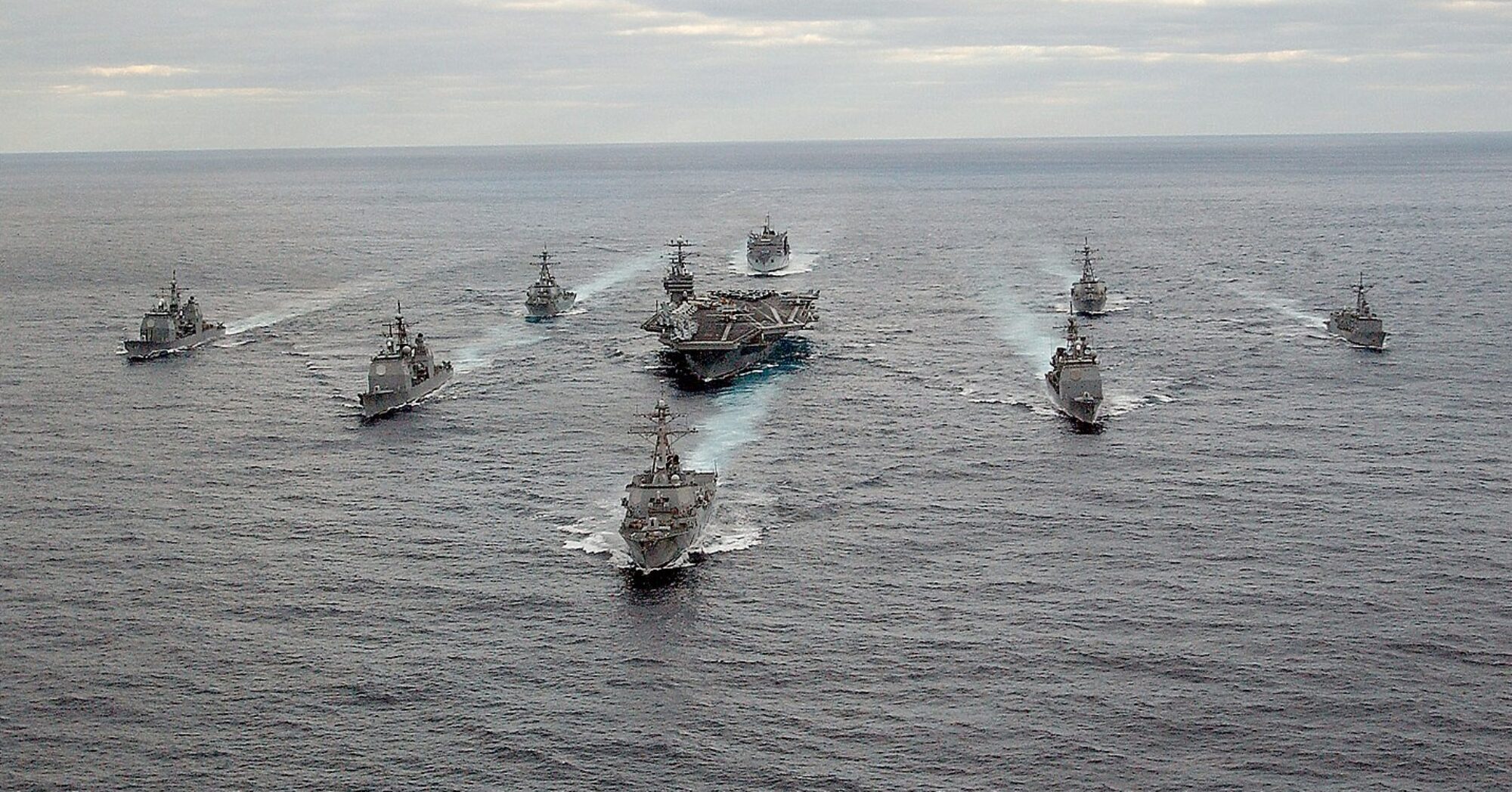

Introduction:
As someone who served on a U.S. Navy destroyer, I’ve always been struck by the incredible responsibility the U.S. Navy holds—not just in defending our nation but in keeping the global economy running. Naval missions might seem distant from everyday life, but the work our sailors do to protect vital sea lanes affects all of us, in ways we often don’t even realize.
When vital sea lanes are threatened, it’s not just the Navy that suffers—the ripple effects hit American businesses and families. What happens in the Red Sea affects us all.
Recently, as noted by Steve Cohen, an attorney at Pollock Cohen LLP and former member of the Board of Directors of the United States Naval Institute (USNI) , in his The Hill article published on September 9, 2024, the Navy faced challenges in the Red Sea, where Iran-backed Houthi forces have disrupted the free flow of goods. While these disruptions may seem far away, the impact of a blocked sea lane trickles down to you, affecting the price of goods, fuel, and even the stability of global markets.
In my recent open letter to Mr. Cohen, I addressed these challenges and emphasized the need for strategic leadership and modernization. Below, you’ll find the full letter detailing my response and call to action.
Open Letter in Response to Steve Cohen’s Opinion on U.S. Naval Operations
Dear Mr. Cohen,
We appreciate your thoughtful and detailed analysis of the U.S. Navy’s recent mission in the Red Sea, as published in *The Hill* on September 9, 2024, Your insights, informed by your work with Pollock Cohen LLP and your experience as a former member of the Board of Directors of the United States Naval Institute (USNI), raise important questions about naval strategy and resources, particularly in regard to adapting to modern threats. While we align with your calls for modernization and strategic clarity, other aspects of the mission’s outcome and broader implications remain areas of discussion among experts and stakeholders.
Support for Our Sailors: We stand by the courage and dedication of those who served on the front lines, giving their all to protect vital sea lanes under difficult circumstances. Their efforts deserve our full appreciation and support.
Call for Clear Strategic Leadership: We agree that the Navy’s missions must be clearly defined, with the resources needed to succeed. Ensuring transparent and well-outlined objectives is critical to empowering our Navy to meet evolving threats. Modernization and clarity in strategic leadership are essential steps forward, and we’ve been vocal advocates of these improvements.
Modernization for Asymmetrical Warfare: We support your emphasis on the rise of asymmetrical warfare, especially with the increased use of drones and new technologies. Your point that the Navy must adapt more quickly to modern warfare challenges is compelling, and we fully endorse the call for upgrading our tactics and tools to address these evolving threats.
“The Navy’s ability to remain effective in an increasingly complex maritime environment depends on revisiting and updating the strategic frameworks that guided us through past global conflicts. Without a clear and adaptable strategy, we risk repeating the same mistakes we saw in the Cold War era.” —Dr. Steven Wills, Senior Advisor, Americans for a Stronger Navy, and author of “Strategy Shelved: The Collapse of Cold War Naval Strategic Planning.“
These lessons remind us that a failure to adapt can lead to unnecessary risks. It is essential that our Navy stays ahead of evolving threats and builds on past experiences to secure our future.
Differentiating Perspectives on Broader Implications: While your analysis raises significant points about the challenges faced in the Red Sea mission, we believe it’s important to frame the incident within the broader scope of the Navy’s role and ongoing efforts. The idea of this being an “existential threat” to the Navy is certainly a point worth debating, as operational setbacks often serve as opportunities and catalysts for positive change rather than signals of a fundamental crisis.
Educating the Public on Naval Planning: The complexity of naval planning cannot be overstated. Unlike battlefield operations, which can unfold over weeks or days, building ships, drones, and the infrastructure needed to support naval operations requires years of strategic planning and investment.
At Americans for a Stronger Navy, we are dedicated to educating the public on this crucial process. By understanding the scale and complexity of naval preparation, the American public can better appreciate the dedication and resources required to maintain a strong, effective Navy.
“As the threats to maritime security evolve, so too must our Navy’s strategy and tools. The key is not just in how we fight, but in how we prepare the public and policymakers to support the necessary changes.” —Dale A. Jenkins, Senior Advisor for Americans for a Stronger Navy, and author of Diplomats & Admirals: From Failed Negotiations and Tragic Misjudgments to Powerful Leaders and Heroic Deeds, the Untold Story of the Pacific War from Pearl Harbor to Midway.
Public Awareness and the Real-World Impact of Naval Readiness: It’s not just about awareness; it’s about connecting naval readiness to how it directly impacts the public’s daily lives. Protecting global trade routes isn’t abstract—when shipping lanes are compromised, we all feel the effects in the form of higher consumer prices, fuel costs, and supply chain disruptions. Only when the American public sees how critical these missions are will we have their full support.
Unifying Stakeholder Messaging: It’s not enough for the Navy or political leadership to bear this burden alone. All stakeholders involved in supporting the Navy must unify their messaging and rally around a common goal—ensuring the Navy’s readiness. By moving away from isolated interests and breaking the perception of self-interest, we can present a clear and powerful case for why supporting the Navy is in the national interest. Stakeholders must come together, speak with one voice, and show that this is about securing America’s future.
Strong Support for the Volunteer Force:
We also share your strong belief in the value of a volunteer force, as noted in your articles, The Need for a Mandatory National Service Program (USNI Proceedings, April 2021) and The Navy Can Reeducate Itself about Education (USNI Proceedings, November 2019). The men and women who volunteer to serve in the Navy embody a commitment to defending our nation, and we must ensure they are equipped and supported in every way possible. At Americans for a Stronger Navy, we are leading efforts to enhance U.S. Navy recruitment and rekindle civic duty, engaging Americans in a mission that extends beyond the Navy itself—toward the future of national service and responsibility.
Read more about our efforts here.
Key Naval Players in the Red Sea: We also want to highlight the key naval assets and their contributions during the mission. The Dwight D. Eisenhower Carrier Strike Group (IKECSG) included:
-
- USS Dwight D. Eisenhower (CVN-69) (aircraft carrier)
-
- USS Philippine Sea (CG-58) (guided-missile cruiser)
-
- USS Gravely (DDG-107) and USS Laboon (DDG-58) (Arleigh Burke-class destroyers)
-
- USS Carney (DDG-64) (Arleigh Burke-class destroyer)
-
- USNS Supply (T-AOE-6), USNS Kanawha (T-AO-196), and USNS Alan Shepard (T-AKE-3) (support ships)
These ships, alongside their air wing, unmanned assets, and the dedicated sailors who served on them, were crucial in responding to threats in the Red Sea, protecting commercial shipping, and conducting multiple successful strikes. Additionally, the success of these operations is supported by the broader U.S. Navy and the essential civilian infrastructure that maintains and sustains naval readiness and operational capabilities.
Call to Action:
We invite readers, supporters, and advocates to join Americans for a Stronger Navy in promoting a well-prepared and adequately resourced Navy. By raising awareness, sharing information, and engaging with your community, you can help ensure that our Navy has the tools and public support needed to remain strong and effective. Visit us at StrongerNavy.org to learn more, get involved, and support our mission.
Together, we must rally the American public behind our Navy, ensuring it has the tools, strategic leadership, and public backing to continue safeguarding our nation and global stability.
Sincerely, Bill Cullifer, Founder Americans for a Stronger Navy

